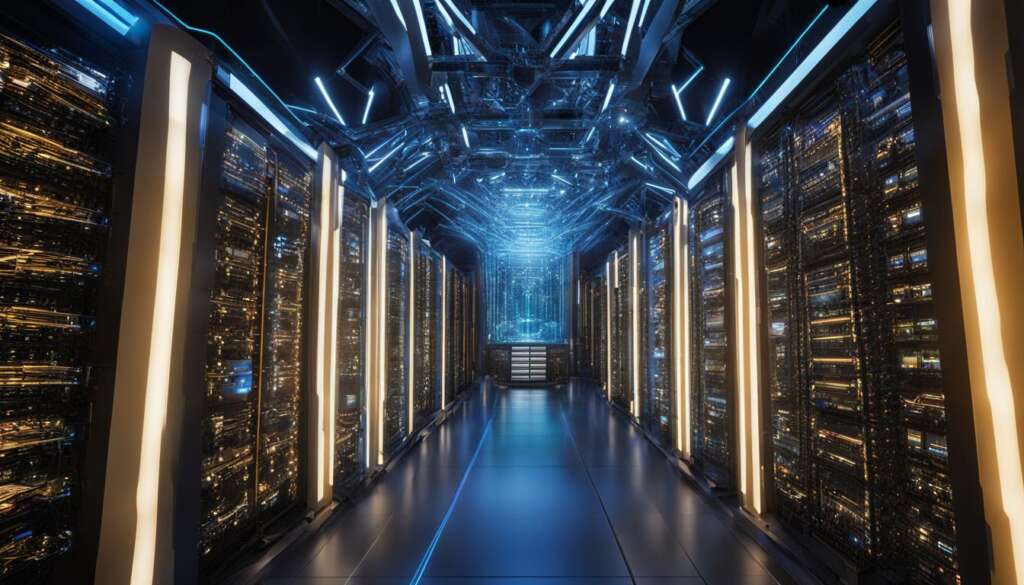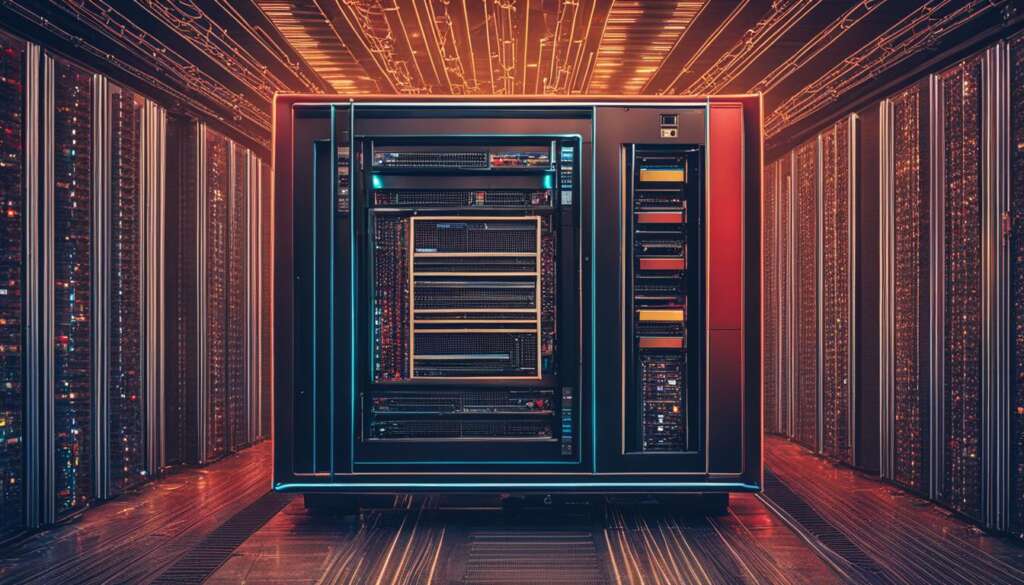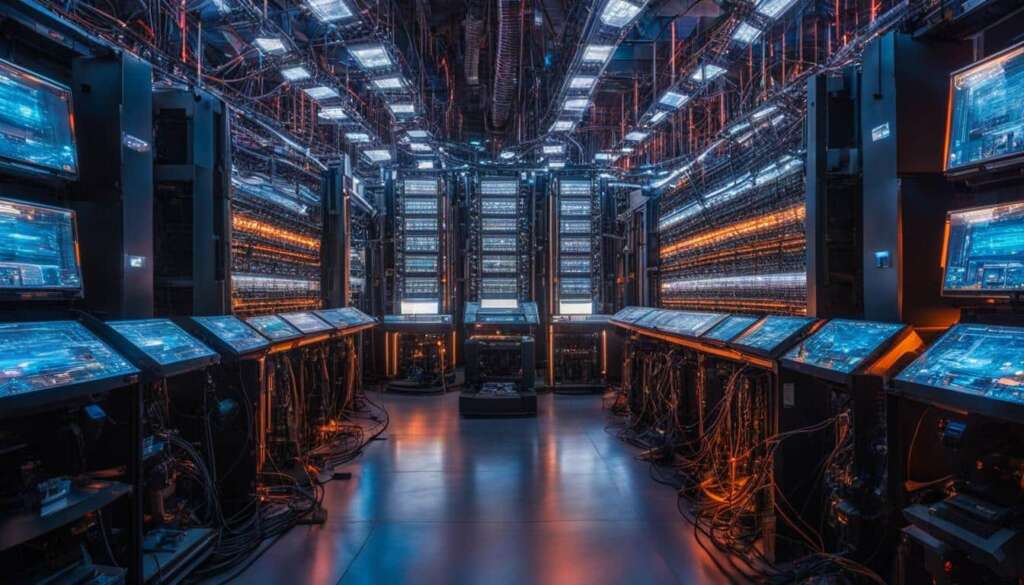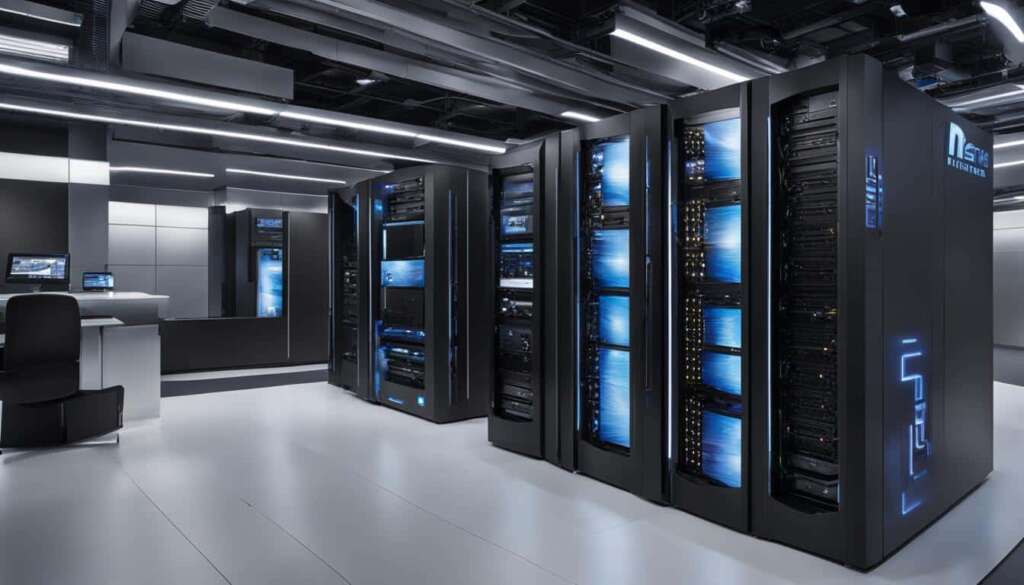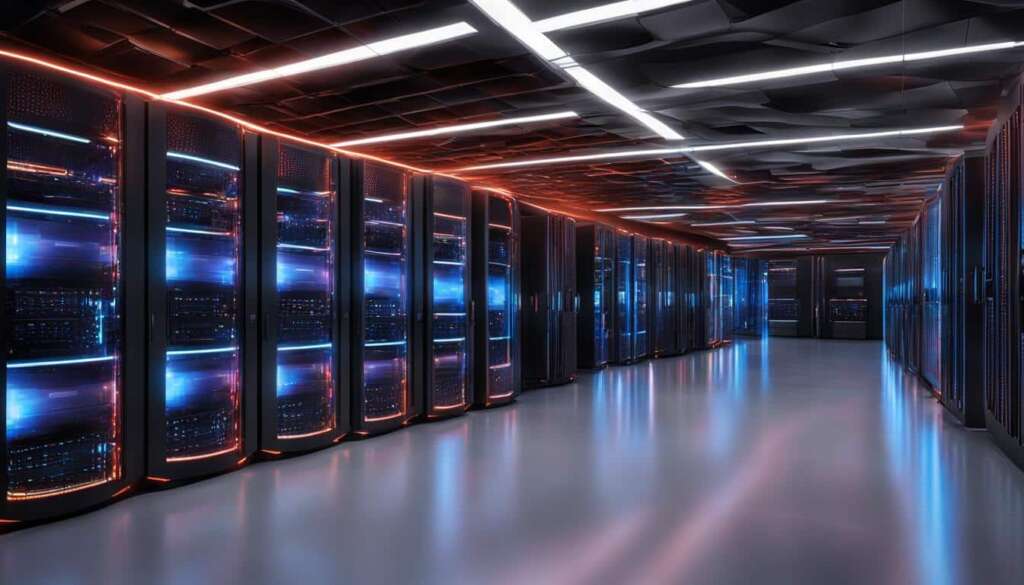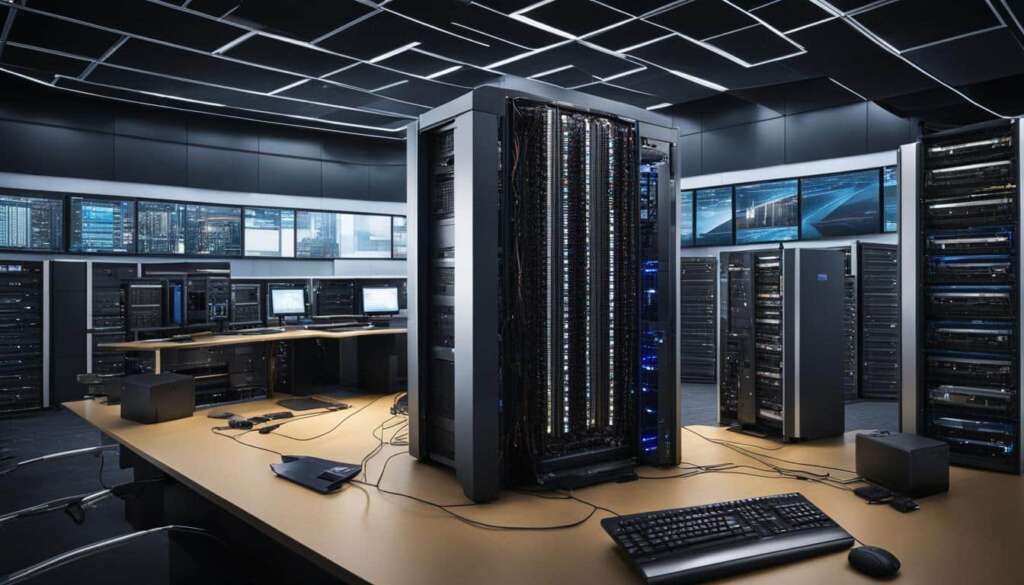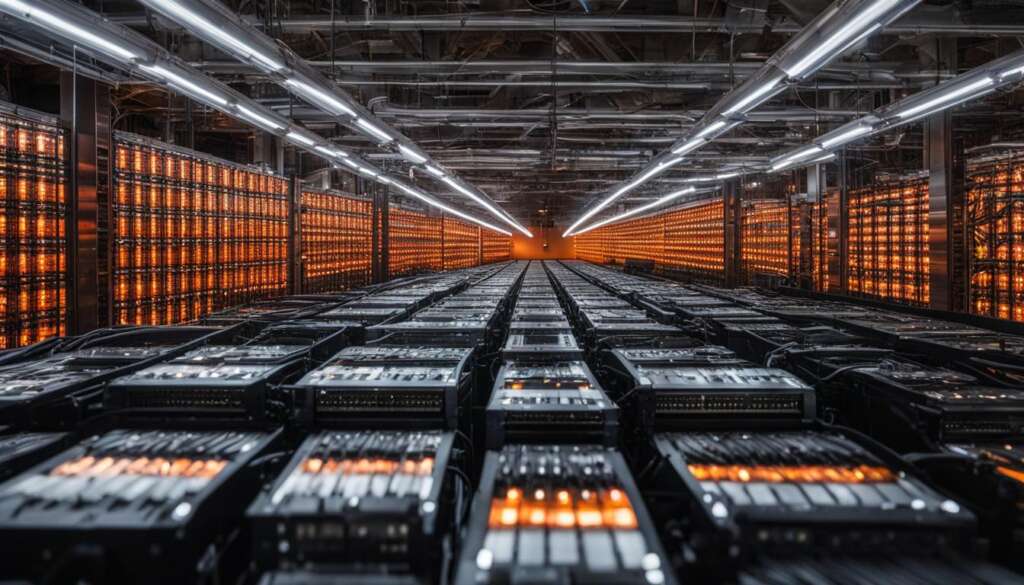Table of Contents
Welcome to our exploration of the fascinating world of mainframes. In this article, we will delve into the what is mainframe, providing a clear and concise mainframe definition, and discussing the incredible technology that powers these remarkable machines.
Mainframes are not just big computers; they are powerful computing systems designed to handle complex calculations and data processing tasks on a massive scale. They are the backbone of many large enterprises, providing the reliability, availability, and serviceability needed for critical applications such as censuses, analytics, and transaction processing.
One of the most significant advantages of mainframes is their ability to connect to multiple end clients simultaneously. This means that several users can access different applications and processes running on the mainframe at the same time, making them incredibly versatile and efficient.
Modern mainframes also offer virtualization capabilities, allowing them to manage extensive databases and files. Despite the rise of cloud computing, mainframes remain an integral part of technology today, with their exceptional ability to handle very large input and output (I/O) volumes.
In the following sections, we will explore the evolution and features of mainframes, their role in computing history, and the importance of mainframe observability in managing the vast amounts of data processed by these incredible machines. Join us on this journey to discover the power and significance of mainframe technology in the digital era.
Evolution and Features of Mainframes
Mainframes have undergone significant evolutions throughout their history, transforming from the colossal “Big Iron” giants to smaller and more versatile systems that seamlessly coexist with other technologies in modern data centers. These powerful computing machines offer a wide range of features that contribute to their enduring relevance and superiority in the digital age.
One of the key advantages of mainframe systems is their exceptional scalability. Unlike other computing architectures, mainframes allow for the seamless boosting or modification of system capacity without interrupting ongoing operations. This feature enables enterprises to efficiently adapt to changing demands and accommodate the burgeoning data processing requirements of today’s interconnected world.
Moreover, mainframes excel in handling high volumes of input/output (I/O) operations. Their robust architecture and extensive I/O facilities enable them to effortlessly manage enormous data transactions, making them ideal for resource-intensive tasks found in industries such as finance, healthcare, and telecommunications.
Mainframe systems are meticulously designed for reliability, availability, and serviceability, commonly referred to as RAS. These characteristics ensure that mainframes consistently deliver excellent performance, minimize downtime, and are easily maintainable. Mainframes boast high storage capacities and possess the ability to offload tasks to separate dedicated engines, further enhancing their efficiency and effectiveness.
Another remarkable feature of mainframes is their ability to support multiple operating systems concurrently on the same machine. This feature allows organizations to consolidate various workloads and optimize resource utilization, reducing costs and simplifying management.
When compared to traditional server-based architectures, mainframes offer several advantages. Mainframes typically boast higher throughput rates, facilitating faster data processing and improved application performance. Additionally, mainframes are renowned for their fault-tolerant computing capabilities, ensuring uninterrupted operations even in the face of hardware failures or system errors.
Overall, the evolution of mainframes has led to the development of technologically advanced systems that excel in delivering unparalleled performance, reliability, and resource management. Their unique features and architectural advantages make them an indispensable tool for organizations grappling with the challenges posed by the ever-increasing demands of the digital era.
Mainframes in Computing History
Mainframes have a rich history dating back to the 1950s when IBM introduced their mainframes to the world. Since then, mainframes have played a significant role in shaping the computing landscape. However, IBM is not the only player in this field. Other foreign manufacturers have also contributed to the development of mainframe technology.
Over time, alternatives to lower-end mainframes emerged in the form of minicomputers and microcomputers. These smaller systems provided organizations with options that could coexist alongside mainframes in data centers.
The introduction of personal computers brought about a shift in the way people interacted with mainframes. Terminals, which were previously used for communication, were replaced by personal computers. While this led to a decrease in demand for mainframes, it did not deter their continuous advancement.
In 2022, IBM unveiled its latest mainframe system, the IBM z16, demonstrating that mainframes are still very much relevant in today’s technology landscape.
It’s important to note that mainframes are distinct from servers. While servers have their own merits, mainframes offer unique advantages, such as higher performance and specialized features tailored to handle mission-critical applications.
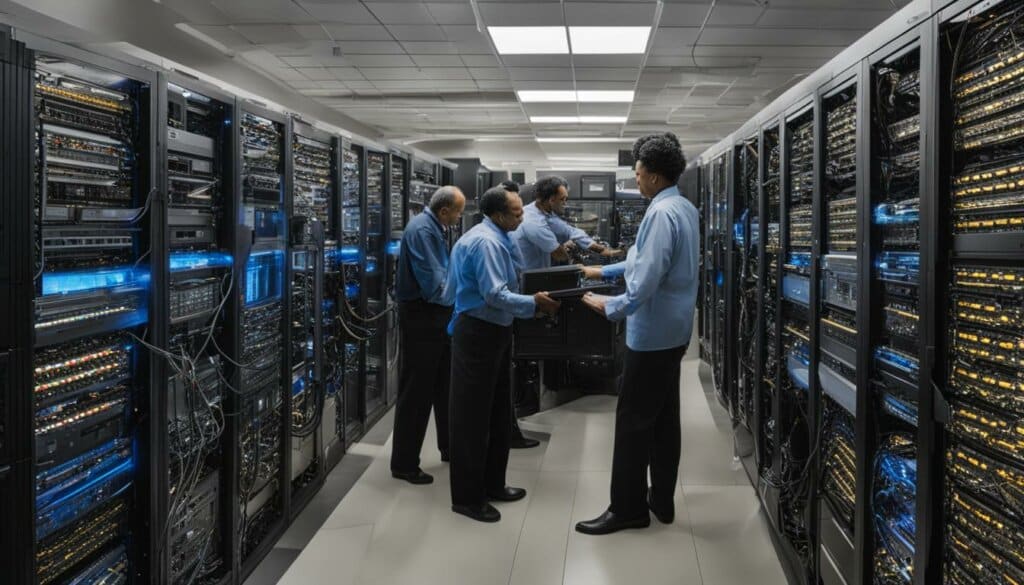
Importance of Mainframe Observability
Mainframe observability plays a critical role in managing the massive amount of data processed by mainframe systems. With the complexity of handling logs and real-time activities, monitoring and analysis become challenging tasks. The observability of mainframes provides organizations with visibility into their systems, enabling them to perform essential tasks such as application performance monitoring, problem identification, and root cause analysis. By ensuring seamless operations, real-time analytics, and robust security, mainframe observability empowers industries like banking, financial markets, and more.
Effective mainframe observability allows businesses to gain actionable insights from the vast telemetry data generated by mainframe systems. By leveraging advanced monitoring and analysis tools, organizations can proactively identify and resolve performance issues, ensuring the smooth functioning of critical applications and services. With real-time visibility into mainframe operations, companies can make data-driven decisions, optimize resource allocation, and mitigate potential risks.
“Mainframe observability enables organizations to stay ahead of operational challenges and performance bottlenecks. By closely monitoring mainframe telemetry data, businesses can identify issues and take timely corrective actions, preventing costly downtimes and ensuring continuous service delivery.” – Industry Expert
Benefits of Mainframe Observability
Implementing robust mainframe observability strategies offers several benefits to organizations:
- Enhanced Performance Management: Mainframe observability empowers businesses to monitor and optimize the performance of critical applications, ensuring efficient resource utilization and delivering an exceptional user experience.
- Improved Problem Resolution: By gaining real-time visibility into mainframe operations, organizations can quickly identify and address issues, reducing downtime and minimizing the impact on operations.
- Root Cause Analysis: Mainframe observability provides detailed insights into the underlying causes of performance issues, enabling organizations to identify root causes and implement effective solutions.
- Robust Security: Effective observability allows organizations to detect and respond to security threats promptly, safeguarding sensitive data and ensuring compliance with industry regulations.
| Benefits of Mainframe Observability | |
|---|---|
| Enhanced Performance Management | ✓ |
| Improved Problem Resolution | ✓ |
| Root Cause Analysis | ✓ |
| Robust Security | ✓ |
Conclusion
Mainframes play a vital role in today’s digital era, even if they are not always in the spotlight. As businesses grapple with the challenges of managing vast data volumes and ensuring visibility across the entire technology stack, the importance of mainframe observability becomes increasingly evident. By harnessing the power of mainframe systems and implementing effective observability tools and strategies, organizations can achieve seamless operations, real-time analytics, and robust security.
Mainframes are a critical component in ensuring the reliability, efficiency, and security of mission-critical applications. In an age where data is king, mainframe observability enables businesses to gain valuable insights and make informed decisions based on real-time analytics. By monitoring and analyzing mainframe telemetry data, organizations can identify and troubleshoot issues promptly, minimizing downtime and maximizing productivity.
Furthermore, in industries such as banking and financial markets, where stringent security measures are paramount, mainframe observability plays a crucial role in detecting and mitigating potential cyber threats. With the ability to monitor and analyze logs and activities in real-time, organizations can proactively identify vulnerabilities and strengthen their security posture.
In conclusion, mainframes remain a cornerstone of digital infrastructure, powering critical applications and processing massive amounts of data. By embracing the importance of mainframe observability and leveraging the capabilities of these powerful systems, businesses can navigate the digital era with confidence, ensuring seamless operations, real-time analytics, and robust security.
FAQ
What is a mainframe?
A mainframe is a large, powerful computer used for complex calculations and data processing tasks. It can simultaneously connect to multiple end clients, allowing several users to access different applications and processes running on the mainframe at the same time.
What are the advantages of mainframes?
Mainframes offer features such as the ability to boost or modify system capacity without interrupting operations, virtualization levels, and the ability to handle high I/O volumes. They are designed for reliability, availability, and serviceability, with extensive input/output (I/O) facilities and the ability to offload to separate engines. Mainframes also have advantages over servers, such as higher throughput and fault-tolerant computing.
What is the history of mainframes?
Mainframes have a rich history, with IBM’s mainframes leading the way since the 1950s. Other foreign manufacturers also built mainframes, and minicomputers and microcomputers eventually emerged as alternatives to lower-end mainframes. Personal computers replaced terminals used for communicating with mainframes, leading to a decrease in demand. However, mainframes continued to advance, with IBM unveiling their latest mainframe system, the IBM z16, in 2022.
What is mainframe observability?
Mainframe observability is crucial in managing the massive amount of data processed by mainframes. This data includes logs and real-time activities, making monitoring and analysis a complex task. Observability allows organizations to gain visibility into their mainframe systems, enabling tasks such as application performance monitoring, problem identification, and root cause analysis.
Why is mainframe observability important?
Mainframe observability ensures seamless operations, real-time analytics, and robust security, empowering industries like banking, financial markets, and more. By harnessing the power of mainframe systems and implementing effective observability tools and strategies, businesses can achieve seamless operations, real-time analytics, and robust security.

